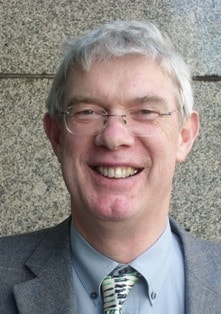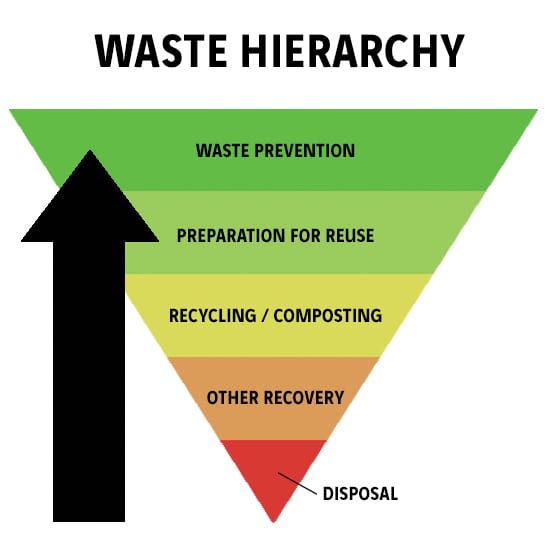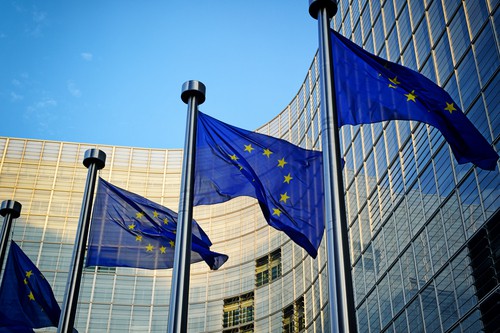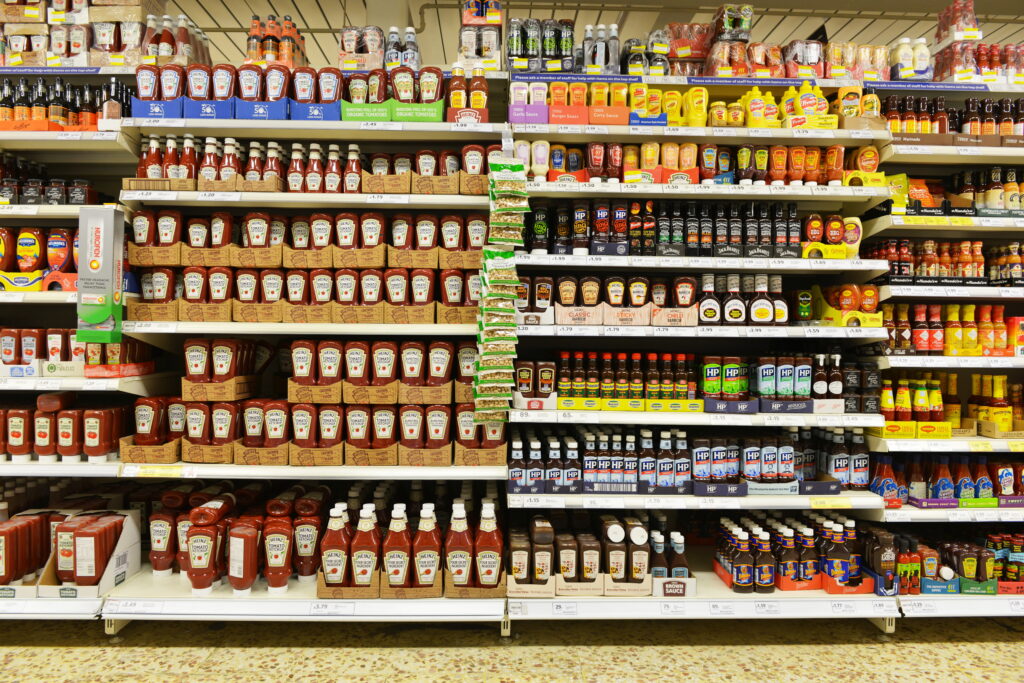This article focuses on a number of the issues that are raised through the formalisation of the waste hierarchy into European Union and Member State waste legislation in 2008/2010. Although there are opportunities to opt out of the hierarchy for specific waste streams and treatments justified through use of life cycle assessment, these are necessarily tightly constrained.

Each of the waste hierarchy elements, but particularly recycling, has problems both with interpretation at a national level and for specific waste streams. This feature will deal with different aspects of waste treatment and explain some of the difficulties and complexities identified during the workshop in adhering to the waste hierarchy.
The workshop was held to examine the waste hierarchy because it is now a fundamental framework for decisions about EU Member States business and even consumer attitudes and behaviour regarding resource utilisation and waste management. However, its introduction into the Waste Framework Directive (WFD) appeared late on in the legislative procedures, as explained by Andreas Versman, now a representative of the EESC Sustainable Development Observatory Mr Versman has previously held the position of policy officer in the European Commission DG ENV. It was the European Parliament that had insisted that the hierarchy was put into the WFD and therefore because this was undertaken so late in the legislative process there were many aspects that were unclear, subject to expert evaluation under the Commissions Technical Adaptation Committee procedures or left to the interpretation of Member States.
None the less we now have the concept of the waste hierarchy firmly embedded not only in European legislation and therefore Member States regulatory practices but also in everyones thinking as to how we ought to manage resources and the wastes that result from their exploitation.
Framework
There are several aspects of policy development and legislative provisions that influence the environmental initiatives pursued by the EUs 28 Member States, including: the 7th Environmental Action Programme; the Roadmap to a Resource Efficient Europe; and thematic strategies on waste prevention and recycling, soil and climate. These broader strategic policies are supplemented by more detailed provisions, specifically covering waste management but with less emphasis directly on resource management aspects.
Aims and objectives
The five stage waste hierarchy as promulgated by the WFD deals with more than waste management issues, in that waste prevention is generally accepted as being outside of the waste management spectrum, even in the WFD. The concept of waste prevention entails more effective and efficient resource management in order to avoid the generation of waste. Therefore, should waste prevention even be included as part of the hierarchy? There are arguments to suggest it should, especially if we were to consider the hierarchy as a broader environmental hierarchy towards more sustainable resource management, a longer title but perhaps more appropriate?
There remain the other four aspects of the hierarchy that specifically focus on waste as shown in the diagram above. These are often depicted graphically as stages or steps, often suggesting that we should be aiming for the higher levels of the depicted hierarchy.
Preparation for reuse is the more appropriate term rather than the more often shortened term reuse. Reuse without the item having become waste is an excellent means of waste prevention.
The ISWA Working Group on Waste Minimisation and Recycling has previously reported on some of the complexities associated with determining whether materials are being re-used, recycled or recovered (and even in some cases disposed). This level of the hierarchy is important as it is the focus of EU environmental policy with the objective of the creation of a recycling society, and that many directives set exacting targets for the recycling of waste materials and also these targets are set to rise in the future.
Composting is also regarded as a recycling operation, although anaerobic digestion even if followed by a composting process for the resulting digestate is classified as a recovery operation in most Member States. Composting and the application of the resulting product to the soil is important as a contribution to sound maintenance of the nutrient cycle. This is obviously of greater importance for the soils of Mediterranean regions compared to those of northern Europe.
Recovery and disposal
Recovery is therefore now regarded as energy recovery, predominantly through incineration of residual wastes that cannot otherwise be recycled and, increasingly for the future, the residues from other waste management operations, such as sorting of materials at a materials recovery facility (MRF) or composting/anaerobic digestion/mechanical biological treatment plants. In the context of the EUs energy demands, while the amount of energy that can be extracted from waste is only a small contribution to overall demand, it could be an important source if energy from waste plants were in future to be located in high density urban areas. This was the case in the late nineteenth century and early twentieth century, rather than on the outskirts of cities, as is now common, as these central city locations have limited opportunities for localised distributed heat and power from other renewable energy sources.
Even this energy recovery option may be restricted in future as the current practice of maturing and processing incinerator bottom ash becomes subject to controls that are the same for natural and secondary aggregates in terms of their environmental impacts, particularly leaching potential, as is planned in Demark for example. Therefore any potential sources of heavy metals may have to be removed from the incinerator feedstock at some point or, more difficult and expensive, detected and removed from the IBA during processing.
The disposal option, mainly through landfilling is still and will remain important so long as we, as businesses and even consumers, purchase and use items that contain hazardous materias, especially heavy metals. Organic pollutants incorporated in materials can be destroyed through incineration, an option available to those Member States that now dispose of all of their residual wastes through EfW facilities, such as Denmark, Sweden and The Netherlands. Therefore, even in The Netherlands, there is an annual 0.1 tonnes per capita of residual waste that has to go to landfill as the final sink. Surprisingly there are still 20 landfills competing for this small amount of waste and offering very competitive prices to entice waste producers to use their facility. According to Heijo Scharff from the consultancy company NV Afvalzorg and a key member of the ISWA Landfill Working Group these 20 landfills currently owned and operated by Dutch regional government departments may need to be nationalised and rationalised because at the moment they cannot all receive sufficient waste to allow them to be completed in a reasonable time period. Beyond that there is the need to ensure that the post-closure operations can cease within a reasonable time by ensuring that landfills are engineered and have been managed in order that any emissions are minimised.
Indeed, there are very few final sinks for waste or the outputs from waste treatment technologies: landfill, the sea (possibly via rivers) or air. Alternatively wastes can be dispersed into the environment through recycling or recovery, ideally without any adverse environmental impacts.
Conclusions
Related Links
The idea of a hierarchy in our thinking about utilisation of resources is conceptually sound but there is a danger, frequently evidenced by exhortations in developing and transition economies, that it is possible to avoid some stages of the hierarchy and just focus on the 3Rs: reduction, re-use and recycling. In reality in these economies there needs to be focus on the health and environmental protection fundamentals of waste management. In addition, enhancing waste management is an excellent means of reducing greenhouse gas emissions.
We are now trying to move towards ensuring that in future we have a circular economy, with emphasis on waste prevention and resource efficiency. This is a process of transition from the odd phase of human activity in the late nineteenth and twentieth centuries when the linear economy became the norm for industrialised countries, rather than the circular economy, which had been the natural practice in our previous agricultural based economies, and which we now plan to make standard practice in the near future.












Subscribe for free